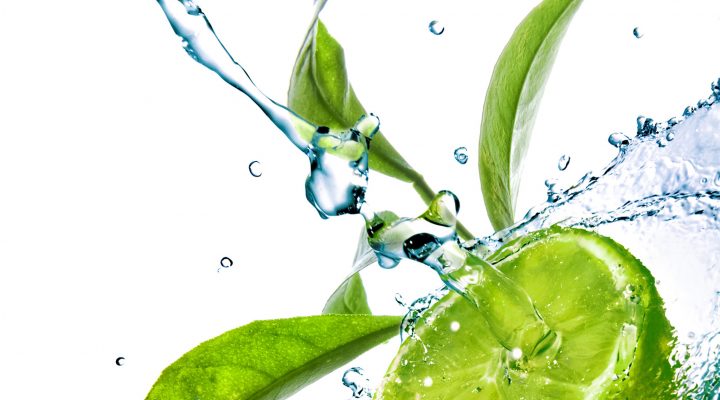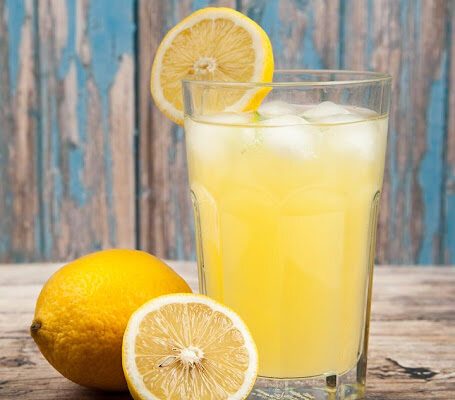Lemon fruit is a rich source of nutrients, including flavonoids, citric acid, vitamin C and minerals (e.g. potassium), which provide numerous health promoting properties. Dr Soraya Bellini, Head of Food Chemistry at CIATI in Argentina, discusses.
Argentina
Lemon production is limited to a small number of countries and regions because of the plant’s extreme sensitivity to low temperatures. Argentina is one of the southernmost countries around the world, with tropical weather in the North and produces around 3,542,000 tonnes of fresh citrus fruits annually. Of the 364,800 tonnes exported in 2020, 68% corresponds to lemon, 22.5% to orange, 9.2% to mandarin and 0.2% to grapefruit. Argentina is the second exporter of lemons and it is the first exporter of concentrated lemon juice and essential oils.
Argentinian lemon industries are integrated companies so they have control throughout the entire production chain. 70% of fruit production goes to by-product production, such as concentrated juice, essential oils and dry peel or pectins. Nowadays, the industries are producing Not From Concentrate Juice (NFC), obtained by simple fruit squeezing and a mild pasteurization.
All these products are obtained from first quality fruit and they are commercialized in internal and external markets. Most companies work under a GSFI (Global Food Safety Initiative) or another quality system and most of them work with SGF (Sure Global Fair), which is a voluntary control system.
The levels of different compounds vary in juices prepared from different lemon cultivars, maturity stage, growing region, cultural practice, storage conditions of fruits, extraction procedure and thermal treatment of juice. The Argentinian lemon juice has distinctive chemicals characteristics with respect to lemon juice in the rest of the world such as: colour, flavour, pulp ratio and soluble solids/acidity ratio, presenting advantages in the international market.
Quality controlled
Regarding the parameters that characterizes the absolute quality requirements such as environmental, hygienic and industrial requirements are all inside the range of values established in the reference guideline (AIJN, 2019) and lemon juice from Argentina presents high concentration of vitamin C, which is another valuable quality characteristic in this product.
Characteristics
Concentrated lemon juice from Argentina does not contain heavy metal elements such as arsenic (As), lead (Pb), cadmium (Cd), Tin (Sn) and mercury (Hg). The industry is evaluating these pollutants including nickel (Ni). The results in more than 1700 analysis, are below the limit of quantification in As, Cd, Sn and Hg (Table 1). Only 1% of samples have resulted positive in Pb, but the values are within the AIJN range.
Table 1: Limits of quantification of heavy metals on concentrated lemon juice.
| Heavy metals |
LoQ (Limit of Quantification) |
| Arsenic |
10 µg/kg |
| Cadmium |
6 µg/kg |
| Lead |
10 µg/kg |
| Mercury |
10 µg/kg |
| Tin |
1 mg/kg |
5-hydroxymethylfurfural (5-HMF) is not present in direct fruit juice, but it is naturally generated during heating or storage processes in the Maillard reaction as well as sugar caramelization and degradation. Therefore, 5-HMF can be used as an indicator of thermal abuse and prolonged or improper storage. In all lemon juice samples tested, concentration of 5-HMF was much lower than 1 mg/l. The maximum value allowed is 20 mg/l (AIJN, 2019).
With respect to the evaluation of identity and authenticity, when comparing the results of Argentinian lemon juice with AIJN parameters, we can see other characteristics that differentiate it from other countries juices.
The organic acid composition is one of these parameters, for example:
- L-malic acid values are usually in the upper part of the AIJN range and 60% of results are above 4 g/l.
- D-Isocitric acid has different values with respect to lemons of tropical weather. The Argentine results are near the minimum of AIJN´s range (average value 285 mg/l), while South Africa has a maximum value of 350 mg/l. These low values make the ratio citric acid/d-isocitric acid high. Although the average of ratio citric/isocitric acid is within AIJN´s value, more than 20 % of samples are above maximum AIJN value. Argentine authentic juice can present values up to 240.
On the other hand, sugar composition is another parameter that is different. The average values are shows in the Table 2. Although all sugars are within AIJN´s ranges, the average in Argentine juice is below the international average. The level of sucrose is lower when it is compared with Mediterranean juice. This is due to the weather conditions in the area, having wide temperature ranges.
Table 2: Sugar content in Argentine lemon juice at 8 °Bx.
| Sugars |
Level in juice |
| Sucrose (g/l) |
2.1 ± 0.8 |
| Glucose (g/l) |
5.5 ±1.2 |
| Fructose (g/l) |
5.1 ± 1.1 |
| Glu/fru |
0.94 – 1.3 |
| Sugar free extract (g/l) |
65 -78 |
Formol Number (also known as formol index) is another parameter of the Argentine fruit juice which is lower than AIJN ranges for the different kinds of juice, and the lemon is not the exception where the average value in Argentina juice is in the minimum of the AIJN range (AIJN, 2019). Although the Formol Number value is low, the amino acids values are within the range. The Table 3 shows the comparison, and some of them are below the range average. We can also observe that Lysine is the amino acid which presents more variability between seasons.
Table 3: Aminoacids content in Argentine lemon juice at 8 °Bx.
| AMINO ACIDS |
AVERAGE (mg/l) |
AIJN RANGE (mg/l |
| Aspartic acid |
477 |
300 – 800 |
| Glutamic acid |
192 |
160 – 400 |
| Threonine |
14 |
10 – 30 |
| Asparagine |
406 |
130 – 600 |
| Glycine |
10 |
7 – 25 |
| Valine |
14 |
8 – 35 |
| Proline |
267 |
100 – 800 |
| Isoleucine |
9.7 |
3 – 10 |
| Leucine |
5.4 |
3 – 10 |
| Lysine |
5.3 |
5 – 10 |
| Phenilalanine |
14.7 |
8 – 40 |
Conclusion
This article summarizes the different characteristics present in genuine lemon juice from Argentina, as a conclusion, lemon juice from Argentina is within the ranges established by AIJN for certain parameters, however some of them are in one extreme of the range. It also presents some distinctive characteristics that differentiates it from other countries juices. Argentina lemon juice industries work on their self-quality control to guarantee the commercialization of its products, being Argentina one of the leading countries in the production of concentrated lemon juice.
References
http://www.alimentosargentinos.gob.ar/HomeAlimentos/Cadenas%20de%20Valor%20de%20Alimentos%20y%20Bebidas/informes/LIMON_Resumen_Cadena_Septiembre_2019.
AIJN (Association of the Industry of Juices and Nectars of the European Union) (2019). Code of practice for evaluation of fruit and vegetable juices 6.6. Reference guideline for lemon juice – Revised September 2019.
Dr Soraya Bellini is Head of Food Chemistry at CIATI in Argentina. She has presented this topic at the IFU Technical Webinars 2021. The webinar can be seen on-demand by clicking here.”






